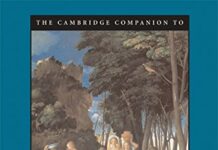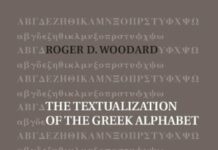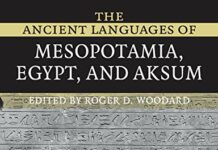
Ebook Info
- Published: 2008
- Number of pages: 286 pages
- Format: PDF
- File Size: 3.38 MB
- Authors: Roger D. Woodard
Description
This book, derived from the acclaimed Cambridge Encyclopedia of the World’s Ancient Languages, describes the ancient languages of Asia and the Americas, for the convenience of students and specialists working in that area. Each chapter of the work focuses on an individual language or, in some instances, a set of closely related varieties of a language. Providing a full descriptive presentation, each of these chapters examines the writing system(s), phonology, morphology, syntax and lexicon of that language, and places the language within its proper linguistic and historical context. The volume brings together an international array of scholars, each a leading specialist in ancient language study. While designed primarily for scholars and students of linguistics, this work will prove invaluable to all whose studies take them into the realm of ancient language.
User’s Reviews
Editorial Reviews: Book Description A convenient, portable paperback derived from the acclaimed Cambridge Encyclopedia of the World’s Ancient Languages. About the Author Roger D. Woodard is the Andrew Van Vranken Raymond Professor of the Classics at the University of Buffalo. His numerous publications include The Cambridge Encyclopedia of the World’s Ancient Languages (2004).
Reviews from Amazon users which were colected at the time this book was published on the website:
⭐It was well written and easy to follow and to understand by those lacking formal linguistic training but who have an interest in the study of languages.
⭐This is part one of the Cambridge Encyclopedia of the World’s Ancient Languages, a collection of 45 entries covering in principle all languages of which sufficient recorded material is available from before 476 AD. The book also exists in one volume, but at 1150 pages it will be clumsy and I take my copy in five manageable parts any day; the price difference is next to negligeable depending on where you buy. The Encyclopedia is a marvelous opportunity to get information about a large number of languages from long ago. All entries are of superb quality, describing all aspects of the language (history, writing system (with tables), phonetics, morphology, syntax, lexicon) in some depth, often even diachronically, and are written by experts in the field. Nevertheless there are some things I’d rather have seen different.For some scripts the direction is not specified, e.g. Sanskrit (left-to-right) and Pahlavi (right-to-left, I think).It is, I think, a pity that Vedic Sanskrit and Classic Sanskrit were not given different entries. Separate treatment would have made both more understandable: much of the morphological complexity of Vedic Sanskrit is motivated and made understandable by its pitch accent, but shows up in Classic Sanskrit, which has an unrelated stress accent, as next to incomprehensible irregularity.The entry on Old Tamil is very interesting; not much is readily available on it elsewhere. But many of the sample text fragments have (unexplained) XML-like structure information in them in the form of numbered of marked brackets. This makes the samples hard to read, and since it is not referred to in the text it adds little or nothing.The words (characters) in the Old Chinese samples are given in their modern pinyin pronunciation (without tones to boot), rather than in the reconstructed phonetics of Old Chinese; it says so right in the second paragraph of the entry and it does. This is like having a grammar of Beowulf with all the words replaced by their modern English equivalents! For example, we are told in the morphology section that Old Chinese has prefixes n-, t-, s-, etc., but we never get to see them since modern Chinese does not allow consonant clusters.As the nineteenth century was the age of decipherment of the ancient oriental languages, the last few decades of the twentieth are the age of the decipherment of the ancient meso-ameican languages; I somehow suspect that this was one of the reasons to publish this encyclopedia now. It is impressive to see how much progress has been made in deciphering the Mayan language. Here “decipherment” is to be taken literally: the language was not the problem since it is the parent of several well-known present-day meso-american languages; but the script was. It left so much to the artistic freedom of the scribes (chiselers?) that almost all signs are different: for example, any cartouche containing a picture of a man, a man’s head or a vulture was an acceptable sign for “‘ahaw” (= ruler). The script is explained extensively, and the Old-Mayan language is then described in the same format as the other languages.Epi-Olmec is a (non-Mayan) language with a completely different script, which is still being deciphered. This shows clearly in some of the purported translations: a translation like “Four are your elsewhere [otherworldly] sky pillars” should raise some eyebrows. Still a large number of translated fragments make sense. Unlike the other entries in the encyclopedia, this entry contains an approx. 100-word dictionary of all known words; I don’t know how much this adds; I’d rather seen more translations from steles. This entry uses the transliteration usual in Native-American linguistics (7 for ? (glottal stop); j for h; x for sh) and so is out of step with the rest of the books. (In the meantime the decipherment has been criticized by Houston and Coe, and that criticism has been critisized by Mora-Marin; in short – decipherment in progress.) A two-and-a-half page report on the decipherment of the Zapotec script concludes the entry.The last section of the book concerns the techniques of proto-language reconstruction. The author advocates a very cautious and conservative approach, showing by example that anything but iron-clad proof can be misleading. (The section numbers in this entry are missing. I haven’t completely read the other four parts yet, but I have the impression that editing is better or even unnoticeable (= perfect) in the later parts.)The above remarks are only minor gripes. These five books are going to get prime estate in my book case!
⭐Excellent product. It provides an excellent grammatical and syntactical summary of the languages it deals with. It arrived promptly and in an excellent condition.
⭐good coverage
Keywords
Free Download The Ancient Languages of Asia and the Americas in PDF format
The Ancient Languages of Asia and the Americas PDF Free Download
Download The Ancient Languages of Asia and the Americas 2008 PDF Free
The Ancient Languages of Asia and the Americas 2008 PDF Free Download
Download The Ancient Languages of Asia and the Americas PDF
Free Download Ebook The Ancient Languages of Asia and the Americas





